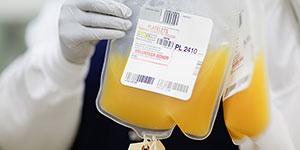When a person donates blood platelets, those platelets become life-saving treatments for a variety of conditions. The amount of blood platelet components (PCs) available at any given time is directly dependent on those donations - but the number of donations is not the only factor that impacts the supply of these products. Loss can occur during the processing of collected platelets.

To better understand the impacts of processing, researchers from bioMérieux and RTI Health Solutions studied FDA-approved methods for reducing bacterial contamination during the processing of platelets: large volume delayed sampling (LVDS) and pathogen reduction technology (PRT). They examined collection, processing, storage/shelf life, and transfusion in a more holistic manner than previous studies; in addition to economic impacts, researchers considered potential clinical effects as well.
Researchers created a decision tree model to simulate the transfusion process from platelet collection through to transfusion. They found that the risk of adverse events was small for both methods, but the difference in costs and availability of PCs for transfusion was considerable. Furthermore, results showed that the processing strategy not only affected the availability of PCs for transfusion, but it also impacted the efficiency and viability of PCs. Specifically, the PRT process caused substantial decreases in the efficacy of platelets, which meant that patients needed significantly more PC units for transfusion in order to get the desired treatment effect.
Researchers concluded that “Although it is acknowledged that PRT is associated with reduced risk of contamination because of emerging viral pathogens and has higher costs, the improvement in safety is marginal while the impact on a hospital’s supply and demand is substantial. Thus, increased utilization of LVDS has the potential to improve efficiency, expand patient access to PCs, and reduce health care costs.”
Learn more about the study here.
